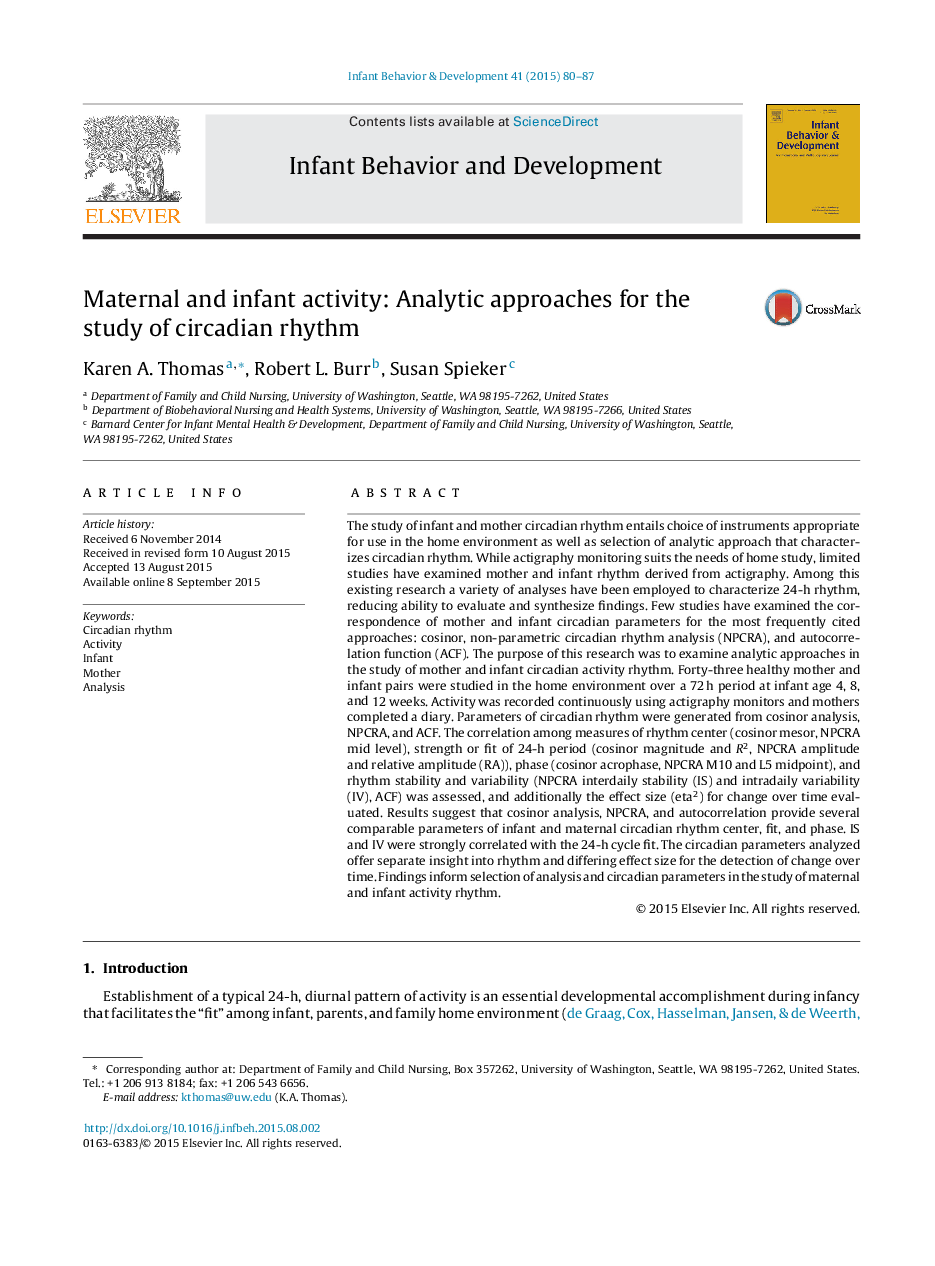| کد مقاله | کد نشریه | سال انتشار | مقاله انگلیسی | نسخه تمام متن |
|---|---|---|---|---|
| 917165 | 1473419 | 2015 | 8 صفحه PDF | دانلود رایگان |
• Three circadian rhythm analyses yielded similar results in mothers and infants.
• Effect size to detect change over time varied across analytic approaches.
• Maternal rhythm, disrupted postpartum, is re-established at infant age 8 weeks.
The study of infant and mother circadian rhythm entails choice of instruments appropriate for use in the home environment as well as selection of analytic approach that characterizes circadian rhythm. While actigraphy monitoring suits the needs of home study, limited studies have examined mother and infant rhythm derived from actigraphy. Among this existing research a variety of analyses have been employed to characterize 24-h rhythm, reducing ability to evaluate and synthesize findings. Few studies have examined the correspondence of mother and infant circadian parameters for the most frequently cited approaches: cosinor, non-parametric circadian rhythm analysis (NPCRA), and autocorrelation function (ACF). The purpose of this research was to examine analytic approaches in the study of mother and infant circadian activity rhythm. Forty-three healthy mother and infant pairs were studied in the home environment over a 72 h period at infant age 4, 8, and 12 weeks. Activity was recorded continuously using actigraphy monitors and mothers completed a diary. Parameters of circadian rhythm were generated from cosinor analysis, NPCRA, and ACF. The correlation among measures of rhythm center (cosinor mesor, NPCRA mid level), strength or fit of 24-h period (cosinor magnitude and R2, NPCRA amplitude and relative amplitude (RA)), phase (cosinor acrophase, NPCRA M10 and L5 midpoint), and rhythm stability and variability (NPCRA interdaily stability (IS) and intradaily variability (IV), ACF) was assessed, and additionally the effect size (eta2) for change over time evaluated. Results suggest that cosinor analysis, NPCRA, and autocorrelation provide several comparable parameters of infant and maternal circadian rhythm center, fit, and phase. IS and IV were strongly correlated with the 24-h cycle fit. The circadian parameters analyzed offer separate insight into rhythm and differing effect size for the detection of change over time. Findings inform selection of analysis and circadian parameters in the study of maternal and infant activity rhythm.
Journal: Infant Behavior and Development - Volume 41, November 2015, Pages 80–87
